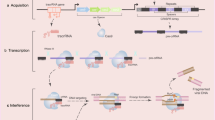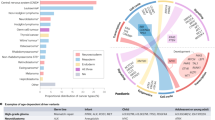Abstract
Objectives: We used palindromic polymerase chain reaction-driven complementary deoxyribonucleic acid differential display to identify and isolate a gene, the human homolog of the Schizosaccharomyces pombe checkpoint gene rad17 (Hrad17), from colon cancer tissue. The loss of checkpoint control in mammalian cells results in genomic instability, leading to the amplification, rearrangement, or loss of chromosomes—events associated with tumor progression. We hypothesized that the Hrad17 may be expressed in thymoma, especially in invasive thymoma. We attempted to determine the influence of Hrad17 expression on clinicopathological features for patients with thymoma who had undergone surgery. Methods: Expression of Hrad17 messenger ribonucleic acid (RNA) was evaluated by reverse transcription-polymerase chain reaction using a LightCycler in 38 thymomas and 10 adjacent histologically normal thymus samples from patients for whom follow-up data was available. Results: Hrad17 transcripts were detected in all 38 tumor samples (8.789±7.337) at levels significantly higher than those in normal thymus samples (1.908±2.267, p<0.0001). No relationship was seen between Hrad17 gene expression and age, gender, or pathological thymoma subtypes. Hrad17 mRNA expression in invasive thymomas (stage II–IV, 10.067±5.293) was significantly higher than that in stage I thymomas (5.193±4.485, p=0.0168). Immunohistochemistry showed that Hrad17 protein was highly expressed in invasive thymoma tumor tissue but not within the normal thymus tissue. Conclusions: Hrad17 was highly expressed in invasive thymoma.
Similar content being viewed by others
References
Levine GD, Rosai J. Thymic hyperplasia and neoplasia: a review of current concepts. Hum Pathol 1978; 9: 495–515.
Souadjian JV, Enriquez P, Silverstein MN, Pepin JM. The spectrum of disease associated with thymoma: coincidence or syndrome? Arch Intern Med 1974; 134: 374–9.
Rosai J, Levine GD. Tumors of the thymus, Atlas of Tumor Pathology. Armed Forces Institute of Pathology, Washington, DC, 1976.
Masaoka A, Monden Y, Nakahara K, Tanioka T. Follow-up study of thymomas with special reference to their clinical stages. Cancer 1981; 48: 2485–92.
Bao S, Chang MS, Auclair D, Sun Y, Wang Y, Wong WK, et al. HRad17, a human homologue of the Schizosaccharomyces pombe checkpoint gene rad17, is overexpressed in colon carcinoma. Cancer Res 1999; 59: 2023–8.
Kataoka A, Sadanaga N, Mimori K, Ueo H, Barnard GF, Sugimachi K, et al. Overexpression of HRad17 mRNA in human breast cancer: correlation with lymph node metastasis. Clin Cancer Res 2001; 7: 2815–20.
Wang X, Wang L, Callister MD, Putnam JB, Mao L, Li L. Human Rad17 is phosphorylated upon DNA damage and also overexpressed in primary non-small cell lung cancer tissues. Cancer Res 2001; 61: 7417–21.
Sasaki H, Chen LB, Auclair D, Moriyama S, Kaji M, Fukai I, et al. Overexpression of Hrad17 gene in non-small cell lung cancers correlated with lymph node metastasis. Lung Cancer 2001; 34: 47–52.
Wittwer CT, Ririe KM, Andrew RV, David DA, Gungry RA, Balis UJ. the LightCycler: a microvolume multisample fluorimeter with rapid temperature control. Biotechniques 1997; 22: 176–81.
Hartwell LH, Weinert TA. Checkpoints: controls that ensure the order of cell cycle events. Science 1989; 246: 629–34.
Murray AW. The genetics of cell cycle checkpoints. Curr Opin Genet Dev 1995; 5: 5–11.
Dean FB, Lian L, O'Donnell M. cDNA cloning and gene mapping of human homologs for Schizosaccharomyces pombe rad17, rad1, and hus1 and cloning of homologs from mouse, Caenorhabditis elegant, and Drosophla melanogaster. Genomics 1998; 54: 424–36.
Parker AE, Van de Weyer I, Laus MC, Verhasselt P, Luyten WH. Identification of a human homologue of the Schizosaccharomyces pombe rad17+checkpoint gene. J Biol Chem 1998; 273: 18340–6.
Li L, Peterson CA, Kanter-Smoler G, Wei Y-F, Ramagli LS, Sunnerhagen P, et al. hRAD17, a structural homolog of the Schizosaccharomyces pombe RAD17 cell cycle checkpoint gene, stimulates p53 accumulation. Oncogene 1999; 18: 1689–99.
Von Deimling F, Scharf JM, Liehr T, Rothe M, Kelter AR, Albers P, et al. Human and mouse RAD17 genes: identification, localization, genomic structure and histological expression pattern in normal testis and seminoma. Hum Genet 1999; 105: 17–27.
Lydall D, Weinert T. G2/M checkpoint genes of Saccharomyces cerevisiae: further evidence for roles in DNA replication and/or repair. Mol Gen Genet 1997; 256: 638–51.
Lau CC, Pardee AB. Mechanism by which caffeine potentiates lethality of nitrogen mustard. Proc Natl Acad Sci USA 1982; 79: 2942–6.
Weinert TA, Hartwell LH. The RAD9 gene controls the cell cycle response to DNA damage in Saccharomyces cerevisiae. Science (Washington DC) 1988; 241: 317–22.
Van Dyke DL, Worsham MJ, Benninger MS, Krause CJ, Baker SR, Wolf GT, et al. Recurrent cytogenetic abnormalities in squamous cell carcinomas of the head and neck region. Genes Chromosomes Cancer 1994; 9: 192–206.
Wlodarska I, De Wolf-Peeters C, Dierick H, Hilliker C, Thomas J, Mecucci C, et al. Detection of amplified sequences at 5q11→q13 in a homogenously staining region found by fluorescent in situ hybridization in a case of B-cell non-Hodgkin's lymphoma. Cytogenet Cell Genet 1994; 65: 179–83.
Panani AD, Ferti-Passantonopoulou A, Raptis S. Involvement of chromosome 5 in large bowel cancer. Cancer Genet Cytogenet 1991; 54: 259–61.
Ejima Y, Yang L. Determination of the genotype of a panel of human tumor cell lines for the human homologues of yeast cell cycle checkpoint control genes: identification of cell lines carrying homoallelic missense base substitutions. Somat Cell Mol Genet 1999; 25: 41–8.
Latz D, Schraube P, Oppitz U, Kugler C, Manegold C, Flentje M, et al. Invasive thymoma: treatment with postoperative radiation therapy. Radiology 1997; 204: 859–64.
Cohen DJ, Ronnigen LD, Graeber GM, Deshong JL, Jaffin J, Burge JR, et al. Management of patients with malignant thymoma. J Thorac Cardiovasc Surg 1984; 87: 301–7.
Post S, Weng YC, Cimprich K, Chen LB, Xu Y, Lee EY. Phosphorylation of serines 635 and 645 of human Rad17 is cell cycle regulated and is required for G(1)/S checkpoint activation in response to DNA damage. Proc Natl Acad Sci USA 2001; 98: 13102–7.
Author information
Authors and Affiliations
Rights and permissions
About this article
Cite this article
Sasaki, H., Kobayashi, Y., Yukiue, H. et al. Hrad17 expression in thymoma. Jpn J Thorac Caridovasc Surg 51, 81–85 (2003). https://doi.org/10.1007/s11748-003-0077-5
Received:
Accepted:
Issue Date:
DOI: https://doi.org/10.1007/s11748-003-0077-5




